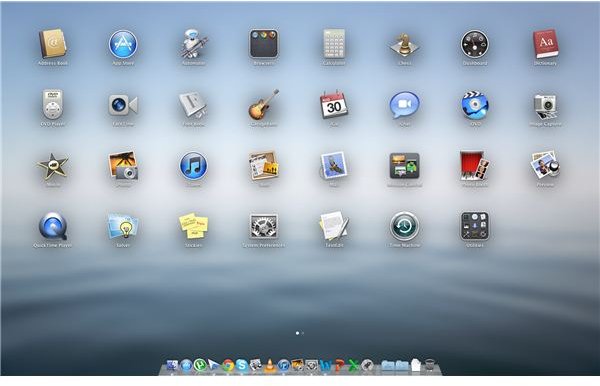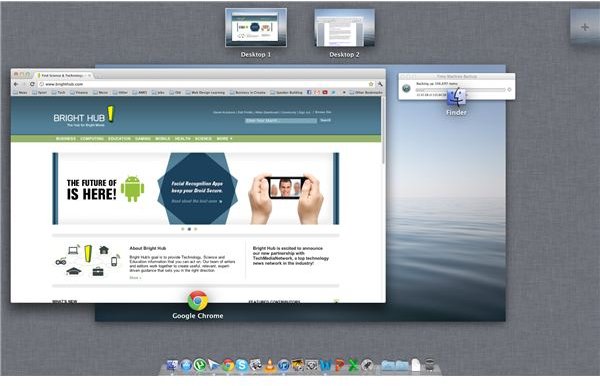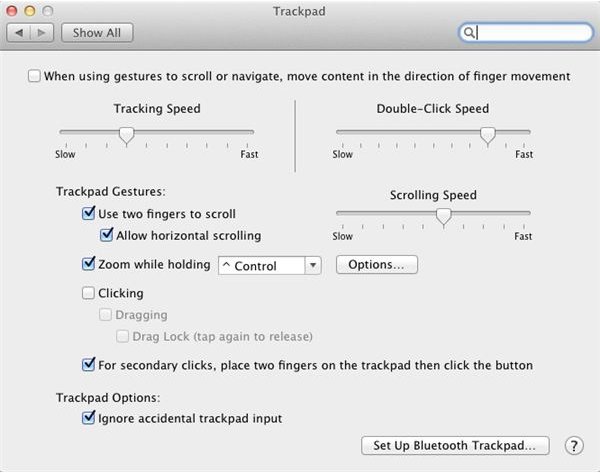The Beginner's Guide to Lion OS X: All You Need to Know About OS X 10.7!
OS X Lion and Its Many New Features
OS X Lion has been released and opinions are largely positive but mixed. Naturally, there are always those that will have trouble with an upgrade and since Lion brings a lot of new features to the table, the experience will be somewhat different from both Leopard and Snow Leopard. Since OS X 10.6, or ‘Snow Leopard’, was mainly an under-the-hood update, those that came from Leopard were not too shaken by the overall experience. This may be a bit different for those upgrading to Lion or even new users, as there is a lot to learn this time around.
We had a close look at Lion’s new features and came to the conclusion that, yes, some aspects of Apple’s new operating system need some further explaining. Therefore we present to you a beginners’ guide to Lion OS X, focusing mainly on those ‘odd’ features that may confuse many, but in most cases can be either solved, prevented or at least better understood. Read on for the some basic knowledge on getting started with OS X Lion.
OS X and the iOS like features
From OS X Lion it becomes clear that Apple is trying to close the gap between iPhones’ iOS and the desktop OS X operating systems. This is also mostly what confuses new users or upgraders. Ironically these changes are made to simplify the desktop computing experience, but at first sight, they make the OS not as friendly to new and non-technical users as previous generations of Mac Operating systems. Here is an overview of these iOS-like changes in OS X Lion and what you can do to change them.
Inverted Scrolling
Inverted scrolling, or ‘natural scrolling’ as Apple claims, is probably the feature that is most complained about by new Lion users. Inverted scrolling means that two-finger scrolling has taken a 180-degree turn and now behaves entirely opposite of what is common. In Snow Leopard (or any other desktop OS platform) when scrolling downwards the web page moves upwards. In Lion the default setting is that scrolling downwards the web page will also move downwards.
The reasoning behind this change is that this is exactly how iOS behaves. Pushing the page upwards with a finger will reveal the lower parts of the webpage. Since Apple commits itself to iOS like gestures in Lion (more on this later) this behavior is copied. Although it may seem natural to Apple, many Lion users disagree and urge to change back to the Snow Leopard defaults. Luckily this can be done with a simple setting tweak:
- Open ‘System Preferences’.
- Open ‘Trackpad’.
- Unselect ‘When using gestures to scroll or navigate, move content in the direction of finger movement’.
Launchpad

Launchpad is a new feature in OS X Lion that is perhaps visually the most obvious port from iOS. Launching Launchpad simply puts all applications on the screen as if it were an iOS home screen. It not only looks as an iOS home screen it also acts the same, with the ability of sorting application in folders.
Dropping an application on another will create a folder. Selecting the folder will reveal all apps that are stored just as it would on iOS. It is also here where you can change the name of a folder.
Deleting applications is also possible from within the Launchpad. Unfortunately, the concept does not live up to its full potential here as only applications that are purchased in the App Store can be removed from the hard disc. Long-pressing the app and selecting the cross that appears will delete it. Long-pressing apps will also make them shake as they would in iOS and they will become moveable for rearrangement purposes.
Gestures
Gestures are not necessarily new to OS X as with the introduction of the unibody designed MacBooks, Apple has built a multi-touch trackpad straight into their laptop devices. A multi-touch trackpad has also separately been made available so that non-laptop users can have an OS X gesture experience as well.
OS X Lion has pushed gesture control to a new level and although a bit confusing and sometimes not consistent, with a bit of practice, gestures can really simplify the overall experience. As there are many gestures, there is a bit of a learning curve to them. To get you started we made an overview of all the common gestures in OS X Lion:
- Two-finger swipe will move the content on the screen (depending on your before-mentioned setting). This movement can either be horizontal or vertical depending on the content. Horizontal two-finger swiping will also navigate between pages in various applications. If there is horizontal content to scroll through, two-finger swipe will first reach the end of the page before using the navigate feature.
- Two-finger tapping will ‘smart-zoom’ in Safari. As OS X Lion is still new, it is to be expected that third-party applications will incorporate this functionality at a later stage.
- Pinch-to-zoom is of course very familiar for iOS users and works the same in OS X Lion (and in Snow Leopard before it).
- Three-finger up swiping will launch mission control (more on mission control on the next page). Mission Control specific gestures will be explained further in the article.
- Three-finger horizontal swiping will make you move between spaces. We will explain the new function of spaces in OS X Lion on the next page.
- Launchpad can be accessed by a trackpad combination as well, but is a bit more confusing and difficult. The proper method is to pinch with three fingers and the thumb. Doing the same gesture, but outwards will reveal the clean desktop.
- Three-finger down swiping will activate the current application into ‘App Exposé’. App Exposé shows all the windows that are open of that particular application in an overview, regardless of the space they are in.
- Three-finger double tapping will look up the word that is under the cursor or highlighted. A variety of sources will be revealed with information about this particular word.
These various gestures each have preview movie clips in the trackpad and mouse preference panes in the System Preferences.
Other New Changes of Lion
Besides the iOS-inspired features in OS X Lion the operating system has a lot of additions that are based on previous unique features of the OS X ‘family’. Others are unique to Lion and have never been seen in any other form before. All of these features have one in common; they are all quite radical changes and all are slightly confusing.
Just like some of the iOS-like changes, these aspects have a learning curve, making them slightly less attractive for new or the less tech-savvy users. However, all serve a new purpose that is aimed to make you even more productive with OS X Lion. We had a close look at these features as well and explain how they work and how to properly use them!
Mission Control

Mission Control is perhaps the biggest and most obvious alteration to OS X. What is does is bring many of Snow Leopards’ separate features, such as exposé and spaces overview together in one new feature. Mission control aims to give the user a quick glance of everything that is currently going on his Mac computer. Not only does it show all the open windows, which is what exposé used to do, it also shows all the spaces on the top of the screen.
As such, the idea is that the user can make quick alterations within the mission control screen. Applications can quickly be dragged from one space to the other and the user can now scroll between spaces without leaving Mission Control and its exposé-like overview of apps. These changes will be very confusing for those coming from Snow Leopard but new users should not find it too difficult to adjust.
As mentioned before, there are some gesture actions that are very specific for mission control. These are the following:
- Enlarging a single window or spreading a cluster of windows is easily done by two-finger swiping in an upward motion. Additionally, and although not a gesture, using the space bar when highlighting a specific window will allow you to have a ‘quick look’ at it.
- Switching between spaces in mission control is the same as when on the desktop and is done by three-finger swiping left or right.
- Mission control can be exited by three-finger swiping downward.
Spaces
Spaces has always been a feature that set OS X apart from Windows and with Lion its role as a productivity enhancement feature has been further extended. However, Spaces has also been made much more complicated to understand and even use.
As mentioned before, Spaces has taken a central spot in your operating system and can be altered within the mission control panel. This way of interacting with Spaces has come at a cost, as the classic spaces overview window is no more in Lion. The confusing part of the new Spaces, is what exactly counts as a Space. This needs some further explanation:
- Dashboard is by default a space instead of simply an overlay, as it was on Snow Leopard. This might be confusing or even annoying for some but can be changed back to its original behavior. In system preferences select ‘Mission Control’ and deselect ‘Show Dashboard as a Space’.
- Another new feature in Lion are full screen applications. Now certain applications can take up all the desktop space, so that the dock and title bar are not visible anymore. Third party developers do not universally support this feature yet, however. Nevertheless, in all cases, full screen applications are by themselves a space.
- A new space can be added in the Mission Control panel by simply moving your mouse to the top-right corner and select the ‘plus’ sign.
You should be aware that any type of space, whether it is in the traditional or one of the above-mentioned forms, behaves as a space. So when you are swiping through spaces, a full screen app or dashboard will be accessible through this motion as well.
Versions and Auto-Save

‘Versions’ is sort of like the Time Machine of individual files. This new Lion feature saves a version of a document when opening it and after every hour of work. The idea is that at any time, the user can access its past and saved versions to make alterations. It is meant as an extra layer of security.
The confusing part of Versions is that instead of ‘Save’ or ‘Save As’ the user is now asked to ‘Save a Version’. A similar effect can be reached by selecting ‘CMD+S’ on your keyboard. Since not all applications are yet OS X Lion optimized, some will still allow for ‘old-fashioned’ saving, causing the feature not to be very unified. You can browse through the various versions of a document by clicking on the title and select ‘Browse All Versions’.
A similar new feature is Auto-Save, which allows for supported applications to save your work every five minutes. This feature does not need too much further information.
Resume
Resume is the last of the major new OS X Lion features. Just like with the other new features, Resume is a bit hard to understand at first and is also not yet universally used by all native and third-party applications alike. Although Resume is not placed under the ‘iOS-like features’ header, it does share some resemblance from the mobile OS.
Resume, in combination with Versions and Auto-Save, makes an application continue straight where it left off, even after the application is shut down. As a matter of fact, the entire method of closing an application is changed as it does not matter now whether the app is properly closed or not, it will always resume. As a result, applications that support Resume are never entirely closed, but retired into some sort of hibernation mode. Resume is a feature that cannot be controlled in any way by the user and therefore no on or off switch exists in system preferences.
OS X Lion, It Takes Some Getting Used To
As we explained here, there is a lot to learn about OS X Lion and it definitely a bigger upgrade than Snow Leopard was. Although many new features work well and do indeed increase productivity it is as if Apple has departed from its own ‘it just works’ state of mind. The main problem that confuses many is that some of the best features of OS X Lion can only work if supported across the board of applications, which they are not yet.
OS X Lion is a new operating system and is aiming to somewhat change the way computers work, to a certain extend. It will now take the effort of third-party developers to fully make use of the platform and in that sense help tame the Lion. This beginners guide to OS X Lion will hopefully help you towards understanding the basics of the operating system and enjoy all that it has to offer!
References
- OS X Lion: About Auto Save and Versions, Apple, http://support.apple.com/kb/ht4753
- OS X Lion: About Multi-Touch Gestures, Apple, http://support.apple.com/kb/HT4721
- All screenshots by the author
- OS X Lion’s ‘Resume’ feature lets you pick up where you left off, The Unofficial Apple Weblog, http://www.tuaw.com/2011/07/22/os-x-lions-resume-feature-lets-you-pick-up-where-you-left-off/
- OS X lion: Macs are no Longer Beginner Friendly, Extreme Tech, http://www.extremetech.com/computing/90832-os-x-lion-macs-are-no-longer-beginner-friendly
